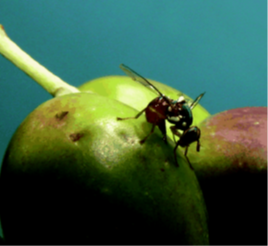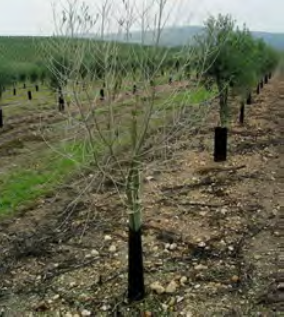31 Mar Olive Industry Biosecurity Awareness & Preparedness Reminder

Ref: https://www.planthealthaustralia.com.au/industries/olives/
The Australian Olive Association (AOA) represents the biosecurity interests of olive producers and the industry. They are members of Plant Health Australia and signatories to the Emergency Plant Pest Response Deed. AOA responsibilities include:
- biosecurity planning and implementation at the national and farm levels
- liaising with federal and state governments on trade issues
- funding and supporting biosecurity initiatives
- participating in national committees and response efforts in an emergency
Biosecurity plan for the olive industry (Version 2.0 October 2016)
Biosecurity planning provides a mechanism for the olive industry, government and other relevant stakeholders to assess current biosecurity practices and future biosecurity needs.
The Biosecurity Plan for the Olive Industry outlines key threats to the industry, risk mitigation plans, identification and categorisation of exotic pests and contingency plans.
On-farm biosecurity best practices play a pivotal role in maintaining Australia’s reputation of producing high quality products. Growers maintaining a pest-free environment can capitalise on this reputation and use it as a trade asset to gain leverage into global and local markets. Additionally, biosecurity practices can act as security against farm quarantine measures.
Proper biosecurity signage; insect, weed and pest surveillance; and on-farm clean-down facilities are three commonly used farm biosecurity measures.
Click on the above link and read on:
High priority exotic pests and diseases of olives
Are you able to recognise the following high priority exotic pests and diseases of olives in Australia, as detailed in the Biosecurity Plan for the Olive Industry?
| Common name | Scientific name | Image | EPPRD category |
| Olive fly | Bactrocera oleae |  |
Not yet categorised |
| Olive moth | Prays oleae |  |
Not yet categorised |
| Verticillium wilt | Verticillium dahliae (exotic defoliating strains) |  |
3 |
| Xylella fastidiosa | Xylella fastidiosa including X. fastidiosa subsp. multiplex and pauca |  |
2 |
Click on the common name links and read on.
Note: The Biosecurity plan for the olive industry (Version 2.0 October 2016), will be reviewed and updated in 2021/22.
Protect your enterprise by developing a biosecurity management plan
Published December 2, 2019
https://apal.org.au/nsw-biosecurity-plan/
By Pip Cotter – NSW, DPI
A biosecurity management plan describes the steps you can take to minimise the risk of pests and diseases entering, establishing or spreading to you property or to other properties.
Identifying the potential biosecurity risks for your enterprise and putting steps in place to minimise those risks can help to reduce inputs costs and protect your industry.
Most growers and farm managers already take steps to minimise biosecurity risk, however many may not have documented their actions and plans. Often, the hardest part about putting a biosecurity management plan on paper, is knowing where to start.
Useful things to think about to ensure your biosecurity management plan works for your enterprise include, asking yourself…
- What am I trying to protect?
My income, family’s future, sustainable farming, market access, industry
- How can I protect it?
By preventing the entry of pests, diseases and weeds, especially the ones that you don’t already have
Think about how pests and diseases could gain entry to your property, or spread to another property, for example these may be:
- Anything arriving onto your property, e.g. plant material, water or fertiliser
- Anything leaving your property
- People movement, vehicles and equipment can carry pests, weeds and diseases
- Not following hygiene practice
How to control the risks
Think about what steps you already have in place, or can easily introduce, to prevent the entry or spread of pests and diseases.
- Monitoring your crops and produce for pests and diseases
- Training yourself and your staff to report anything unusual
- Keeping good records of farm inputs and outputs
- Participating in Quality Assurance schemes
There are a range of resources available to assist you with the development of your biosecurity management plan. For more information and resources to start preparing your plan
- See farmbiosecurity.com for a variety of resources and templates, including a generic ‘Farm Biosecurity Action Planner’ you can tailor to your enterprise
- Speak to your Industry Development Officers
- Check out your industry peak body websites
- Talk to other growers about the steps they take
A good first step is to use a farm biosecurity action planner like the one provided at farmbiosecurity.com to identify which practices you already do well and those that you may not have previously considered.
NSW growers
A newly formed arrangement for NSW commercial production landholders has commenced on 1st August 2019 under the NSW Biosecurity Act 2015. The arrangement has been developed to ensure people entering farms that are managed by a biosecurity management plan comply with the measures outlined in the plan. Visitors to the property who do not comply with active management plans may be held accountable by the owner under the NSW Biosecurity Act 2015. If you wish to use this new arrangement on your property, growers must have an up-to-date farm biosecurity management plan in action with a visitor registration and specific biosecurity farm gate sign located on all exterior entrances to the area. The NSW LLS is providing free signs (and stickers to update existing signs) until 31 December 2019.
For more information, head to NSW DPI biosecurity management plan

